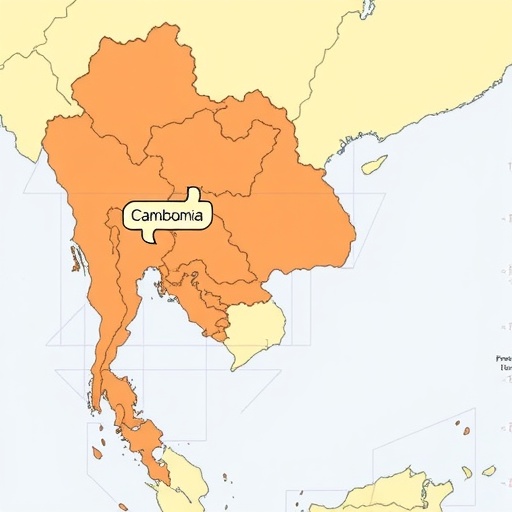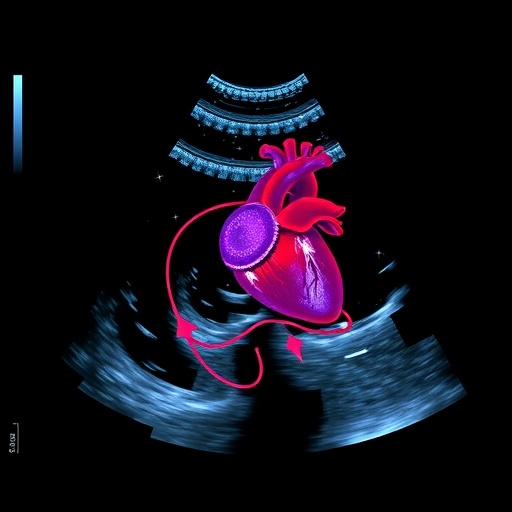In a groundbreaking advancement for forensic genetics and population studies, a recent investigation has meticulously catalogued allele frequencies and forensic parameters at 23 autosomal short tandem repeat (STR) loci across a cohort of 406 Cambodian individuals residing in Thailand. This comprehensive dataset, derived from state-of-the-art genetic profiling techniques, offers unparalleled insight into the genetic architecture of this distinct Southeast Asian population, enriching existing forensic databases and enhancing the precision of forensic identification in complex cases.
STRs, microsatellite markers characterized by repeating units of 2-6 base pairs, have long been foundational in forensic DNA analysis due to their high polymorphic nature, making them superb candidates for individual identification and kinship analysis. By targeting 23 loci, this study shifts beyond the conventional 13 or 15 loci used in many forensic panels, amplifying discrimination power and providing a robust framework for genetic comparison within and beyond regional populations.
The sampled population comprised 406 unrelated Cambodian individuals currently living in Thailand, a demographic segment that reflects both historical migration patterns and contemporary socio-political dynamics. Genetic studies such as this are critical for populations underrepresented in global forensic databases, which have traditionally been biased toward European and East Asian cohorts. The resultant allele frequency maps thus fill an essential gap, offering forensic practitioners more accurate probability estimates when evaluating DNA evidence from Cambodian-descent individuals.
.adsslot_9854bkAu3I{ width:728px !important; height:90px !important; }
@media (max-width:1199px) { .adsslot_9854bkAu3I{ width:468px !important; height:60px !important; } }
@media (max-width:767px) { .adsslot_9854bkAu3I{ width:320px !important; height:50px !important; } }
ADVERTISEMENT
Technically, the DNA typing employed multiplex PCR assays designed to co-amplify all 23 targeted STR loci simultaneously, optimizing efficiency and consistency. Precision in allele calling was ensured through capillary electrophoresis and comparison with allelic ladders, preventing misclassification of rare or novel variants. This rigorous methodology underpins the reliability of the allele frequencies reported, which is crucial for forensic casework where statistical confidence can influence courtroom verdicts.
Beyond mere allele frequencies, the study explores forensic parameters including observed heterozygosity, expected heterozygosity, power of discrimination, power of exclusion, and polymorphic information content at each locus. These metrics provide a statistical toolkit for evaluating the utility of each STR marker in the context of individual identification, parental testing, and population genetic differentiation. A high observed heterozygosity indicates a marker’s ability to distinguish among individuals effectively, an attribute confirmed at most loci within this Cambodian dataset.
The forensic power of this data extends into kinship investigations and complex mixture analyses in forensic laboratories. Population-specific allele frequencies allow geneticists to calculate match probabilities with greater accuracy, reducing the risk of false inclusions or exclusions. The uniqueness of the Cambodian population’s allele distribution underscores the necessity of region-specific databases, as applying frequencies from disparate populations may skew likelihood ratios and jeopardize judicial fairness.
The implications of this study are manifold. On a forensic scale, possessing a Cambodia-specific STR database equips law enforcement agencies in Thailand and neighboring regions to better serve Cambodian-origin individuals in legal contexts, from criminal investigations to disaster victim identification. On an anthropological level, the allele frequency data contribute to reconstructing migratory histories and genetic affinities among Southeast Asian populations, enriching the broader narrative of human population dynamics in this geographically complex area.
Furthermore, this investigation sets a precedent for expanding forensic genetic databanks to encompass broader ethnic and national groups often neglected due to limited sample availability or geopolitical constraints. The incorporation of diverse datasets not only advances forensic science but also promotes equity and precision in justice systems worldwide, especially in multicultural societies with increasing ethnic admixture.
The methodological rigor and thorough statistical treatment exemplified in this study underscore the critical intersection of molecular genetics, statistics, and forensic science. As forensic DNA analysis transitions into increasingly complex molecular landscapes, such comprehensive population-specific datasets become indispensable for maintaining the evidentiary integrity of DNA profiling.
Looking ahead, the integration of autosomal STR data with emerging genomic technologies, such as massively parallel sequencing and SNP array platforms, promises to further refine our understanding of human genetic variation at unprecedented resolution. This multi-locus STR dataset may serve as a foundational reference against which novel forensic markers or methods can be benchmarked and validated.
In summary, the generation of allele frequencies and forensic parameters across 23 autosomal STR loci in a cohort of 406 Cambodian individuals residing in Thailand represents a major leap forward in forensic genetics. This work enhances the accuracy and fairness of forensic identification for a pivotal but historically underrepresented population, while simultaneously contributing to our knowledge of Southeast Asian genetic diversity.
Such advancements resonate profoundly in the forensic science community, reinforcing the critical role of population genetics in crime solving and justice. By addressing both applied forensic needs and fundamental population genetic questions, this research exemplifies the power of multidisciplinary approaches to tackle complex societal challenges through science.
As forensic science evolves in the genomic era, studies like this chart the course for inclusive, high-resolution genetic databases, ensuring that DNA evidence remains a gold standard of proof that reflects the true diversity and complexity of human populations worldwide.
Subject of Research: Allele frequencies and forensic parameters of 23 autosomal STR loci in Cambodian individuals residing in Thailand.
Article Title: Allele frequencies and forensic parameters based upon 23 Autosomal STRs loci of 406 Cambodian individuals in Thailand.
Article References:
Siripatoomrut, N., Romgaew, T. & Aobaom, S. Allele frequencies and forensic parameters based upon 23 Autosomal STRs loci of 406 Cambodian individuals in Thailand. Int J Legal Med (2025). https://doi.org/10.1007/s00414-025-03532-z
Image Credits: AI Generated
Tags: allele frequencies in Cambodian populationautosomal short tandem repeats studyforensic databases for Southeast Asian populationsforensic identification in complex casesgenetic diversity in Cambodian individualsgenetic profiling techniques in forensic sciencehistorical migration patterns in Southeast Asiaimplications of genetic studies in forensicskinship analysis using STRsmicrosatellite markers in DNA analysisSTR loci analysis in forensicsunderrepresented populations in genetic research





